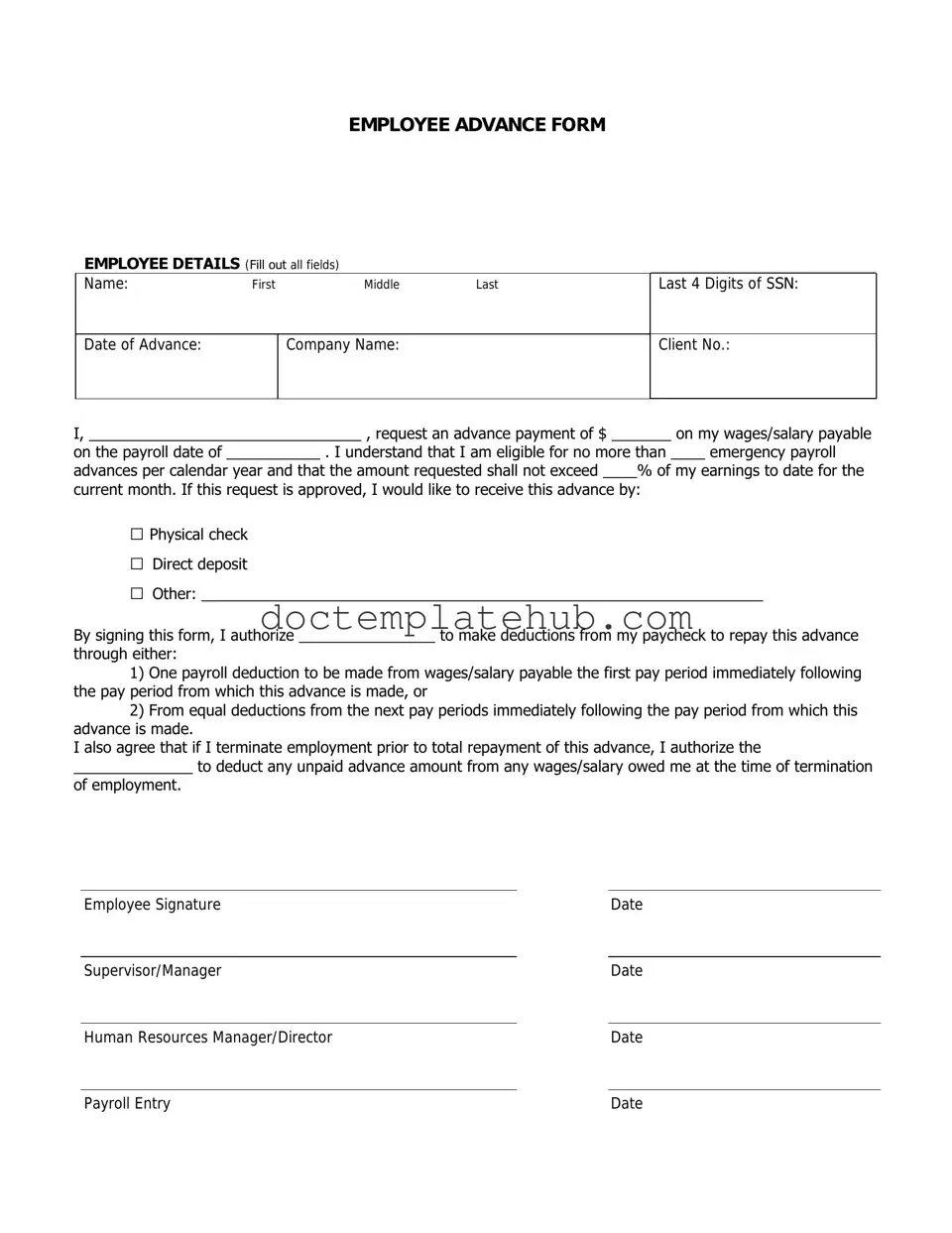What is the Employee Advance form?
The Employee Advance form is a document that allows employees to request an advance on their salary or wages. This form is typically used in situations where an employee may face unexpected financial hardships and requires immediate assistance. It helps ensure that employees can manage their financial obligations while waiting for their regular paychecks.
Who is eligible to request an advance?
Generally, all employees who have been with the company for a specified period are eligible to request an advance. The specific eligibility criteria may vary by organization. It is important for employees to check their company's policy regarding advances, as some companies may have restrictions based on job performance or length of service.
How do I complete the Employee Advance form?
To complete the Employee Advance form, begin by filling in your personal information, including your name, employee ID, and department. Next, clearly state the amount you are requesting and provide a brief explanation of why you need the advance. Be honest and concise in your explanation. Finally, sign and date the form before submitting it to your supervisor or the designated HR representative.
What happens after I submit the form?
Once the form is submitted, it will be reviewed by your supervisor or the HR department. They will assess your request based on company policies and your individual circumstances. You should expect to receive a response within a few business days. If your request is approved, the advance will typically be deducted from your next paycheck.
Are there any repayment terms associated with the advance?
Yes, there are usually repayment terms that accompany an employee advance. These terms will specify how and when the advance will be repaid, often through deductions from future paychecks. It is crucial to understand these terms before accepting the advance, as they can affect your future earnings.
What should I do if my advance request is denied?
If your advance request is denied, it is advisable to seek feedback from your supervisor or HR representative. Understanding the reasons for the denial can provide valuable insight and may help you in future requests. Additionally, consider exploring alternative financial resources or assistance programs that may be available to you.
